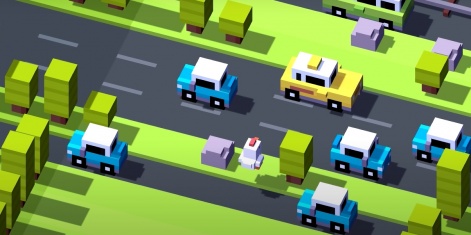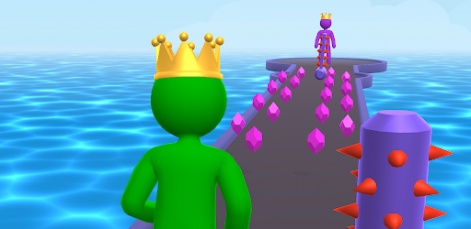Tom Pigott is CEO and founder of Ludo.ai, and founder of Jetplay
The hypercasual genre remains, by some distance, the largest of its kind within the gaming industry. Around 40 per cent of all games are classified as hypercasual, and 45 per cent of all mobile gaming downloads fall within the hypercasual genre. So it is important that hypercasual studios are as up to date as possible when developing their next product.
Hypercasual games are defined by multiple characteristics, and fundamentally involve straightforward mechanics and design, low difficulty levels, and quick and easy gameplay. But this straightforward appeal does not mean simple design, and studios need to do everything they can to ensure their games are as appealing and accessible as possible.

The design and development process is crucial when creating hypercasual games, and a well-formulated Game Design Document (GDD) is an invaluable tool that is collaborative and encourages innovation, regardless of the expected life cycle of any title.
GDDs create one collaborative space
A GDD is a useful tool for studios looking to work quickly and efficiently. It provides the foundation for a gaming project, breaking down the key elements of the development process in one collaborative space.
A GDD is a useful tool for studios looking to work quickly and efficientlyTom Pigott
It can also act as a blueprint for the design and mechanics of the game. For hypercasual studios, the collaborative nature of a GDD can be really important. Agreeing on a plan with members of their team from the very beginning of the project, and ensuring that the process has a clear structure from the outset, can be key to the success of the game development process.
This is made all the more important given the high turnover of titles within the hypercasual space. A GDD can make developing a game a smoother and more efficient process.
Embrace new tools
SIFOR studios, an indie hypercasual game studio which uses cutting-edge AI tools to develop highly successful hypercasual mobile games, spoke to how effective a GDD can be in helping these studios thrive in such a competitive section of the industry.
Ali Hamwi, CEO and co-founder of SIFOR, stated that “a process that was previously taking days now takes seconds,” through the use of a GDD and other tools within it, He also stated that the use of these new tools has seen SIFOR accelerate its development process, allowing them to create over 50 games in the last year alone.
While studios operating within other genres may use a GDD to keep track of a game development process, hypercasual studios games can showcase GDDs other benefits. Within the hypercasual space, a well-built GDD can provide a structured plan that studios can follow, or even establish a template that can be used again and again.
What this means for studios, and what was definitely the case for SIFOR, is using new tools to create a GDD can result in a higher turnover of games, helping studios compete in what is already a very populated industry.
A GDD constantly evolves: ideal for the time constraints hypercasual studios face
One of the features of a successful GDD is its brevity and flexibility. Hypercasual studios in particular are often faced with time constraints, and competition in the mobile games sector can put studios under pressure to turn over a lot of titles in a very short period of time. A GDD can be a very straightforward and short document that is invaluable to studios whose time is precious.

Hamwi again outlines this implicitly, stating: “Time is an incredibly important currency, and how that time is used and shared among team members is key.” For this reason, the constantly evolving nature of a GDD can really help studios. A successful GDD evolves alongside the game, changing quickly as the game development progresses. It can also make the process more flexible, meaning changes can be made quickly and efficiently in line with shifts during the process.
Stick to the core, but with room to grow
Flexibility is important when creating a GDD. It has the game concept at its centre but is also able to adapt and change as development progresses. This flexibility is important to hypercasual studios that might be producing a large number of games in a short time.
A flexible GDD means these studios may make significant changes to the concept and design of a game quickly while keeping other members of the team up to date.
One of the many ways studios can look to effectively utilise a GDD is by creating a base GDD template which lays the foundations of their development process. Once they have this working template locked in, it can be easier for studios to adapt and evolve the key elements of each project they do.
What to include in your GDD
We have now established why a GDD can be such an important tool for hypercasual studios, but what should studios look to include in their own GDD?
A summary of the game concept
A key feature of hypercasual games is that they are able to provide an entertaining experience for players with a combination of regular positive results, easy to achieve in-game incentives, and effortless repetitive play.
This is often achieved by having a sound game concept, something a GDD can help to establish. Many studios elect to establish a summary of their concept at the beginning of their GDD. This describes the game in concise detail before setting out the project plan and the schedule the team will look to follow. It can also outline the target audience for the game, whilst hypercasual studios may decide to include the specific type of hypercasual game they are planning to produce.
Clearly defined key elements of the game
A GDD can also be divided into separate sections that address the key elements of the game's design, gameplay and mechanics. Hypercasual studios are constantly striving to streamline their development process in order to meet the high demand for hypercasual mobile games in the marketplace.

A GDD which is clearly structured into sections can help in this pursuit of productivity. Many studios may choose to divide elements such as game mechanics, design, and audio into separate sections.
Much as hypercasual games may rely heavily on relatively simple graphics, mechanics and design, it can still be incredibly useful to organise these elements into clearly defined sections, allowing them to narrow their focus and lock in what is best for their game concept.
Up to date information on the development process
A GDD should be kept up to date, whether significant changes have occurred in the game’s development or not. However big or small these changes may be - from changes to the core fundamentals of the game to the team members working on it and the development schedule itself - they should be recognised and reflected in the project’s GDD.
This is not necessarily crucial to the success of the game itself, but it can make the development process far more productiveTom Pigott
Some studios may decide to keep hold of earlier versions of their GDD in order to evaluate their process at the end of a project. It is crucial that during the process itself every member of the team is working from the same, up to date edition of the GDD.
A dynamic and engaging aesthetic
Studios should try to make a GDD visually interesting and dynamic. This is not necessarily crucial to the success of the game itself, but it can make the development process far more productive. Teams are proven to work more efficiently when the materials they are working with are engaging, and a game development team is no different when working with a GDD. A visually exciting GDD may also inspire new and interesting ideas that may ultimately inform the finished product.
To recap, here are my key points on why GDDs are invaluable to hypercasual studios:
- A GDD is a collaborative document, encouraging innovation and inspiration for studios all in one place
They act as a collaborative hub for teams developing their next game, streamlining the development process by having everything in one place
- Embrace new tools
AI offers new opportunities when creating a GDD
- A GDD is a constantly evolving document, which is ideal for the time constraints hypercasual studios face
With time being a precious commodity, and hypercasual game studios needing to appeal to an increasingly large market, the flexibility of a GDD is invaluable
- A flexible GDD centre on the core concept of the game, but also allows ideas to grow
Hypercasual mobile games often begin life as a very simple concept, before other elements are added, a process which a flexible GDD can enhance
And these are the key things for studios to include in their GDD:
- A summary of the game concept
A short introduction on the type of game the studio is aiming to create
- Clearly defined sections pertaining to key elements of the game
These can include design, game mechanics, and gameplay features among others
- Up to date information on the development process
A GDD should be updated whenever there is a significant development in the game creation process, to ensure everyone is working from an updated version
- A dynamic and engaging aesthetic
A successful GDD should look to use dynamic visuals and presentation as this will aid in the engagement of the entire team during the process























